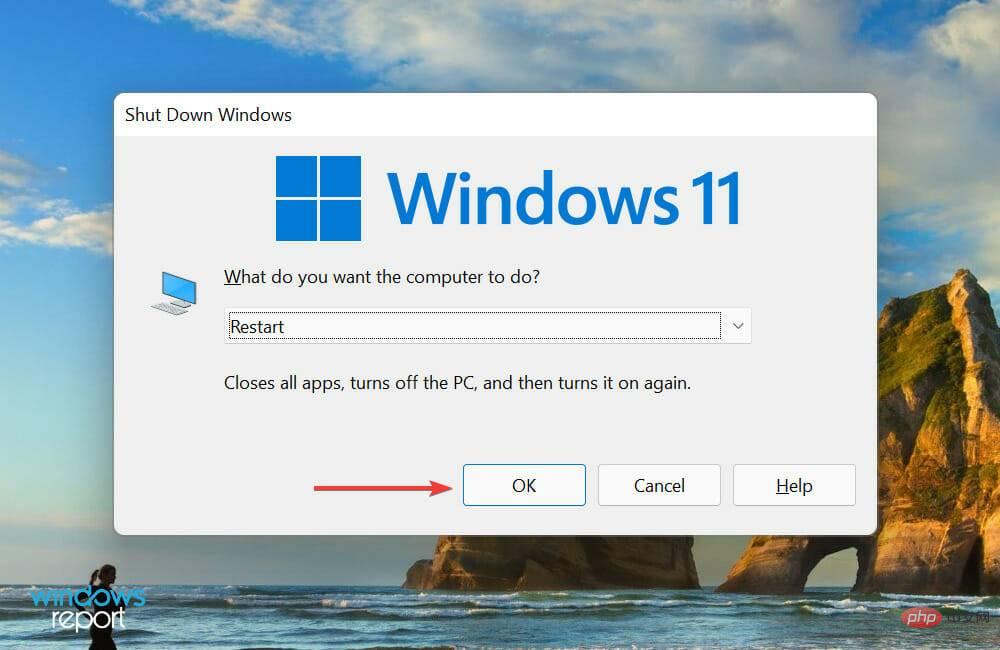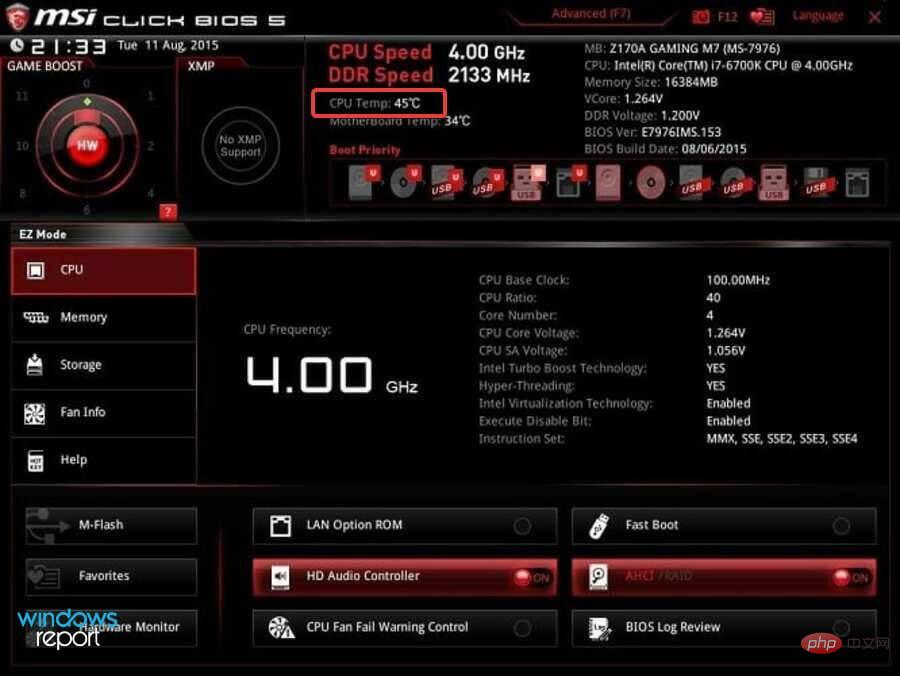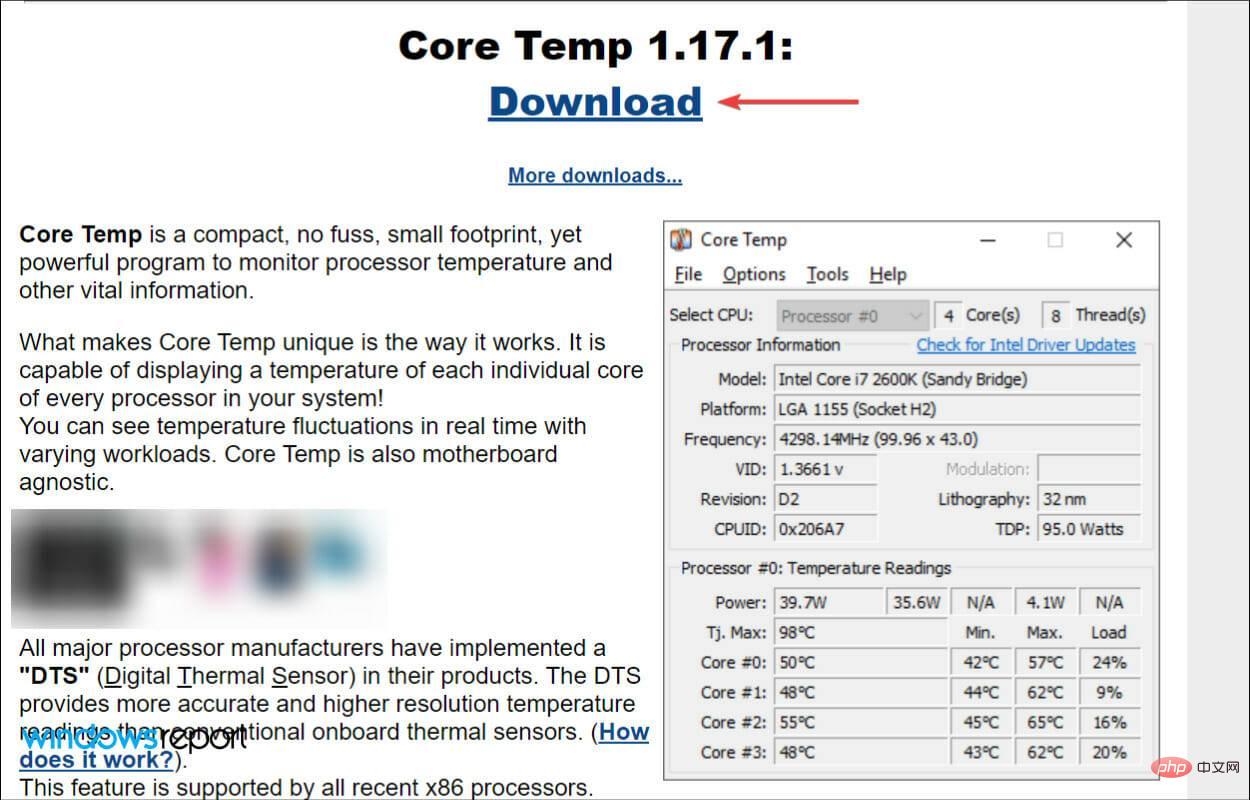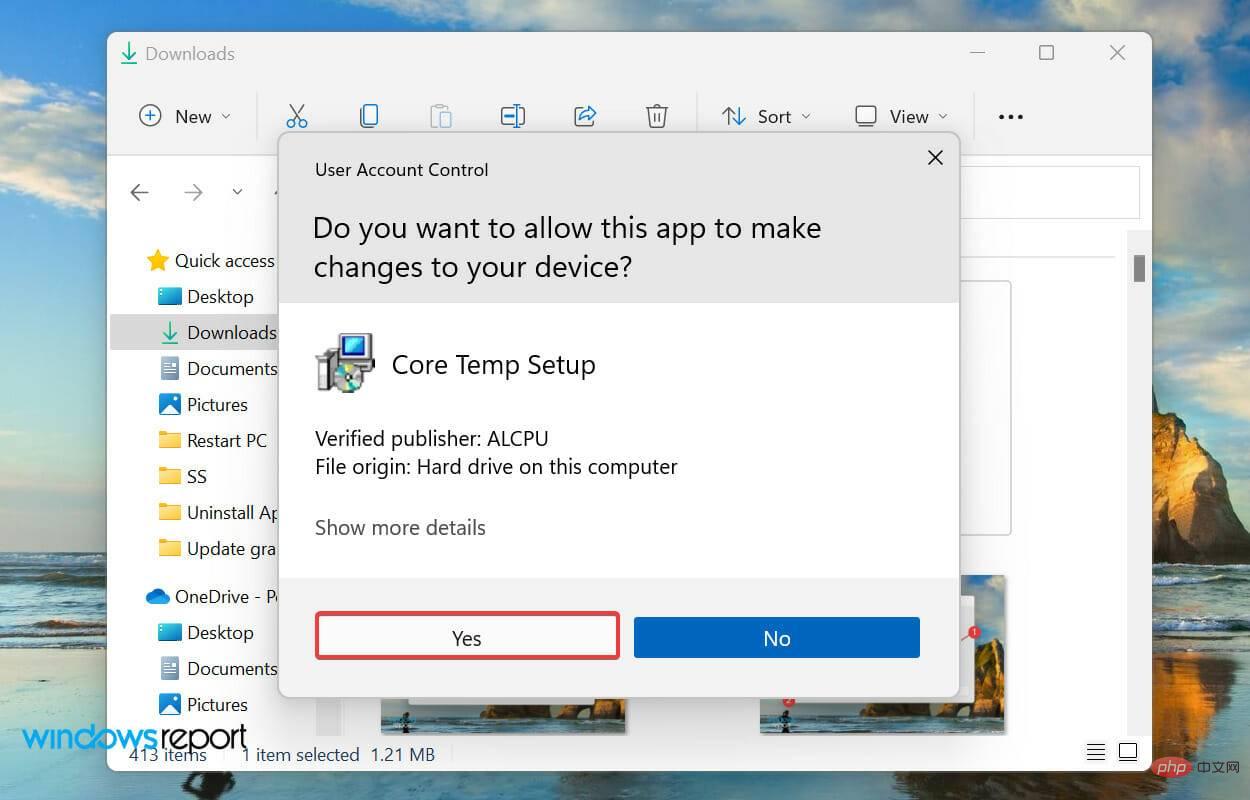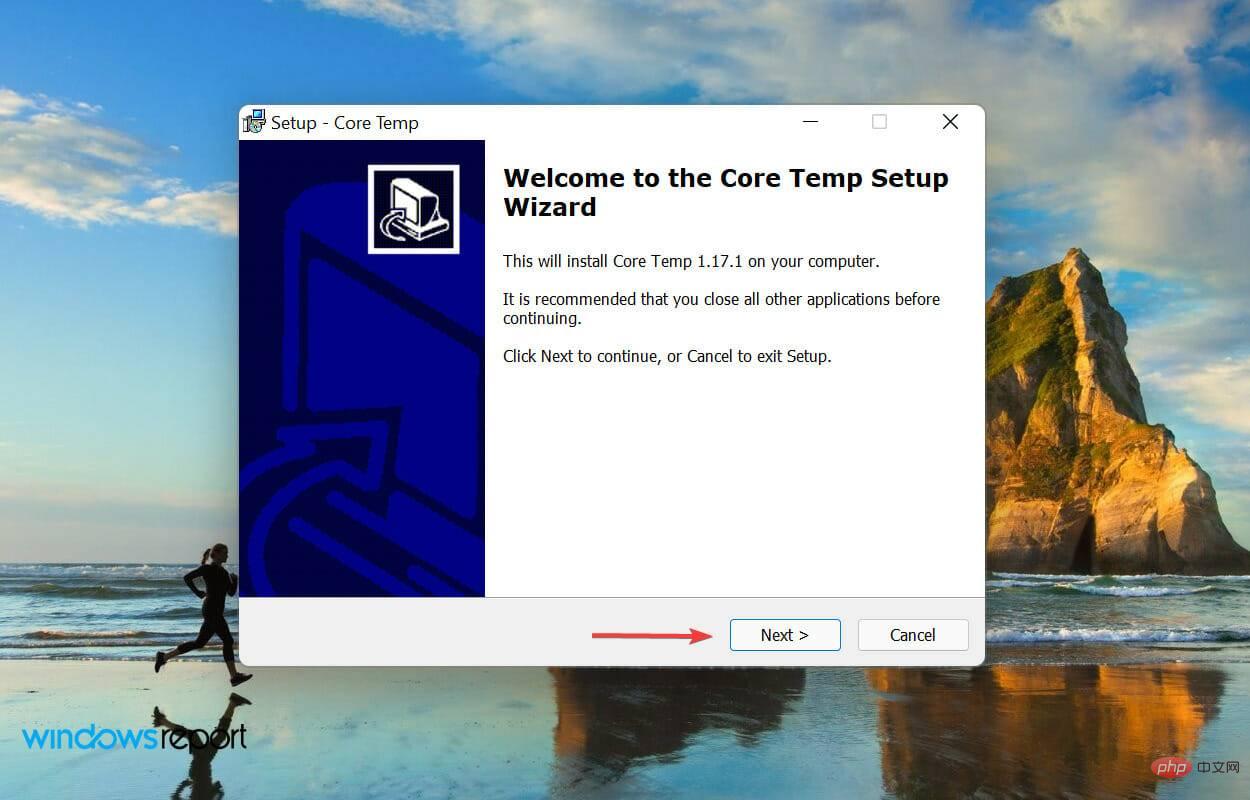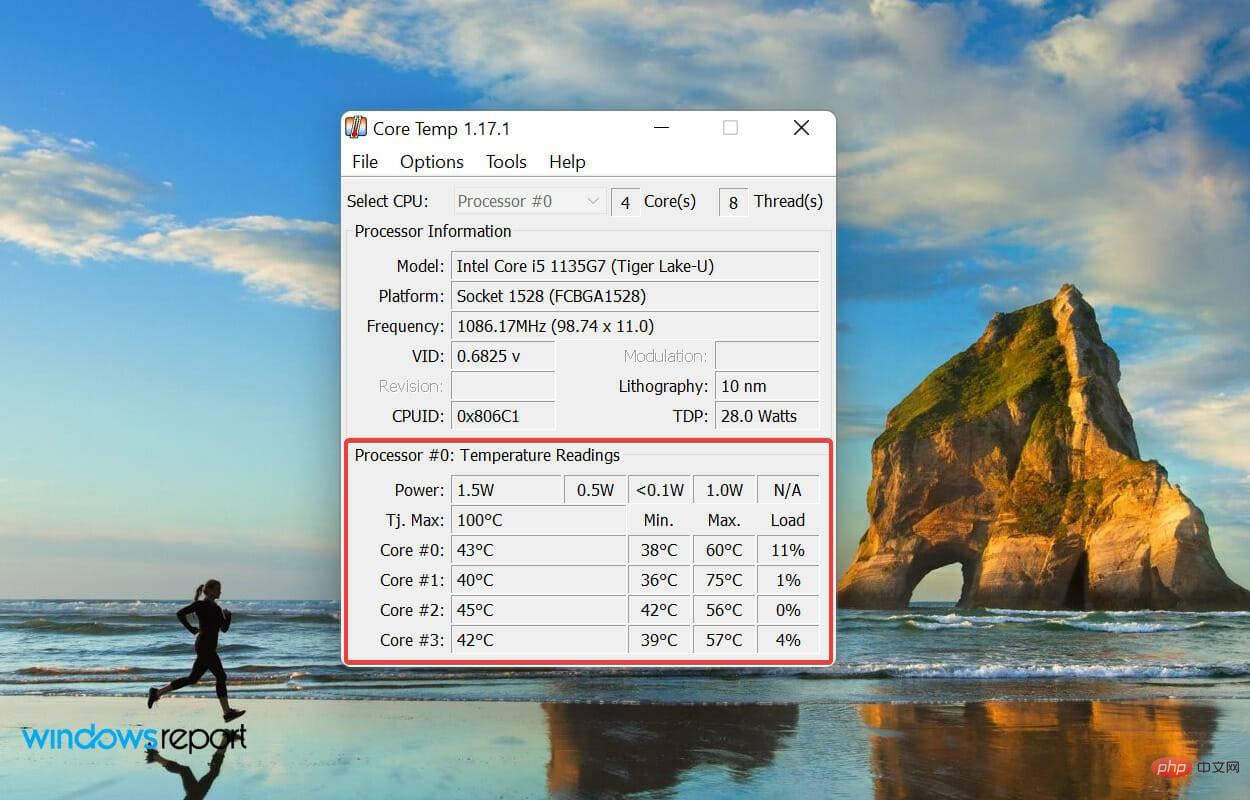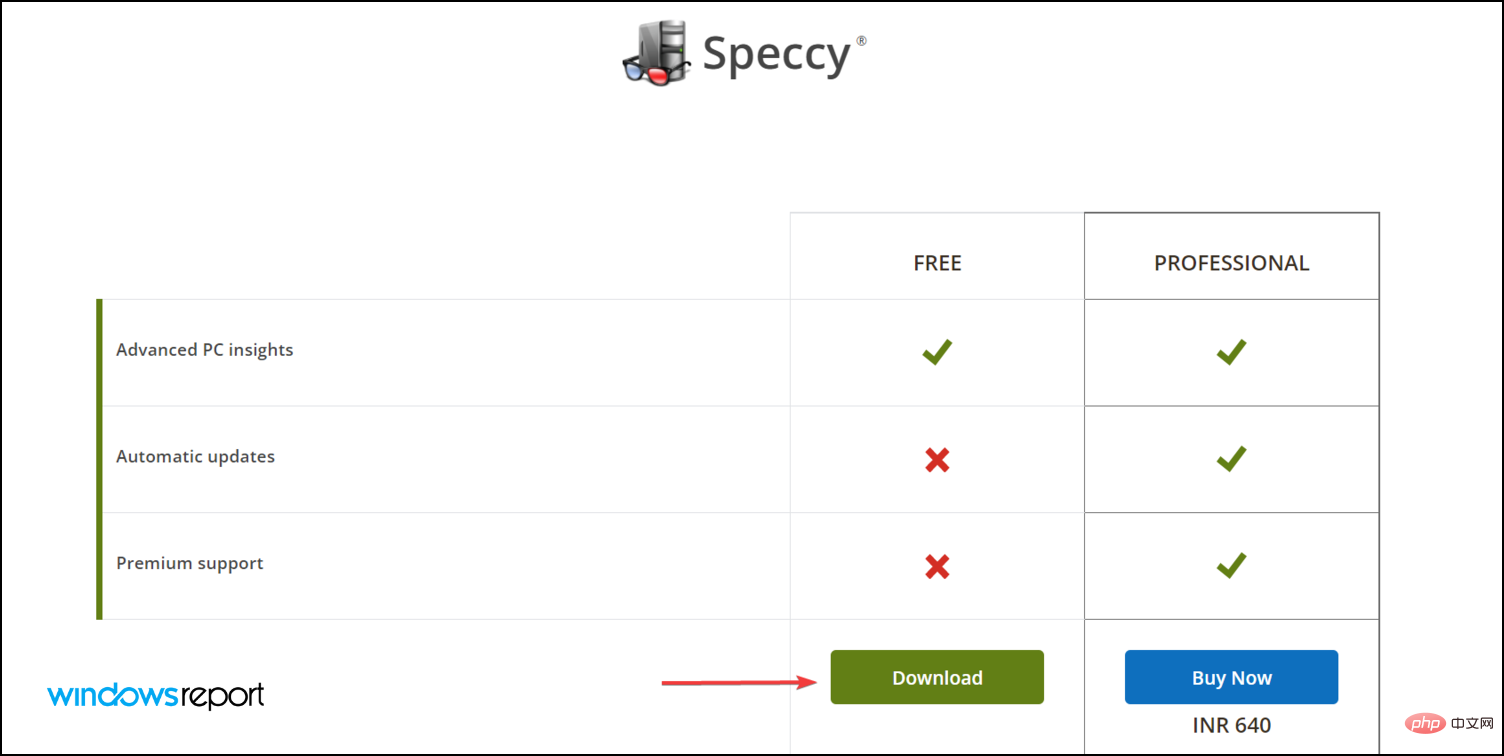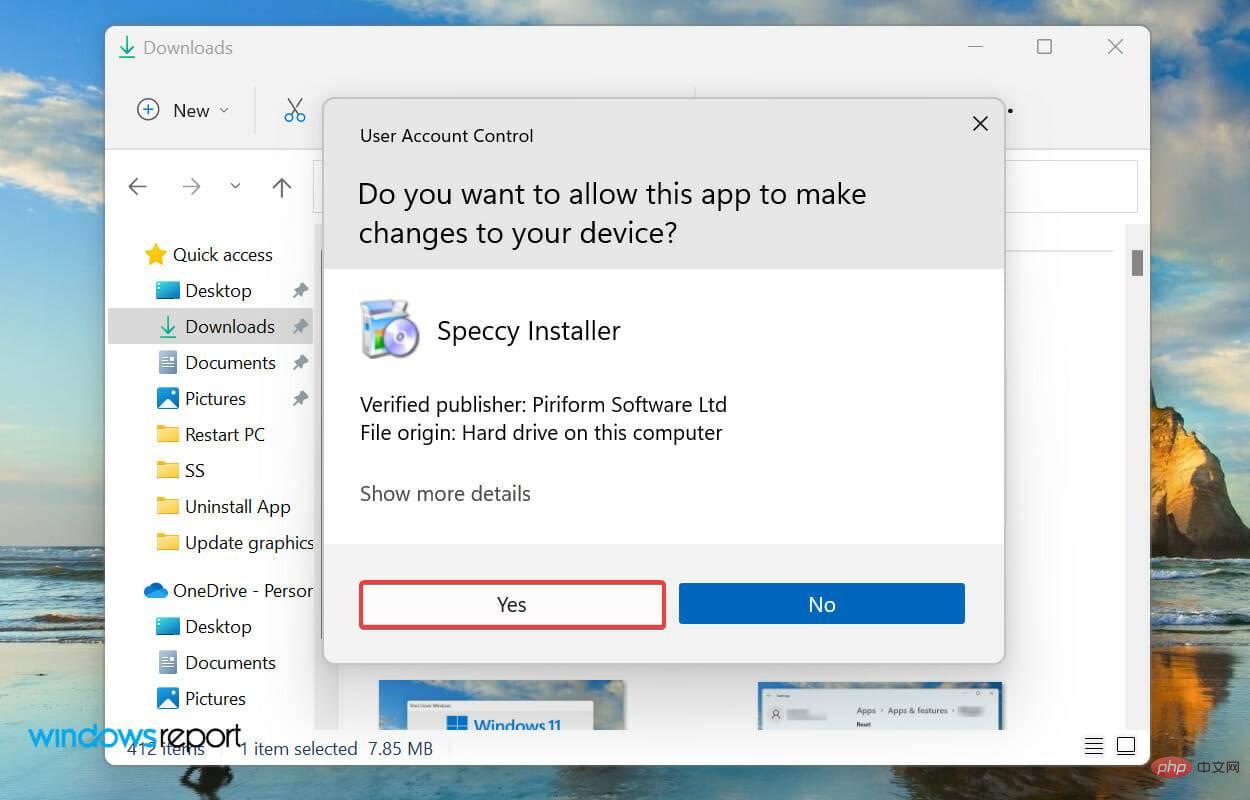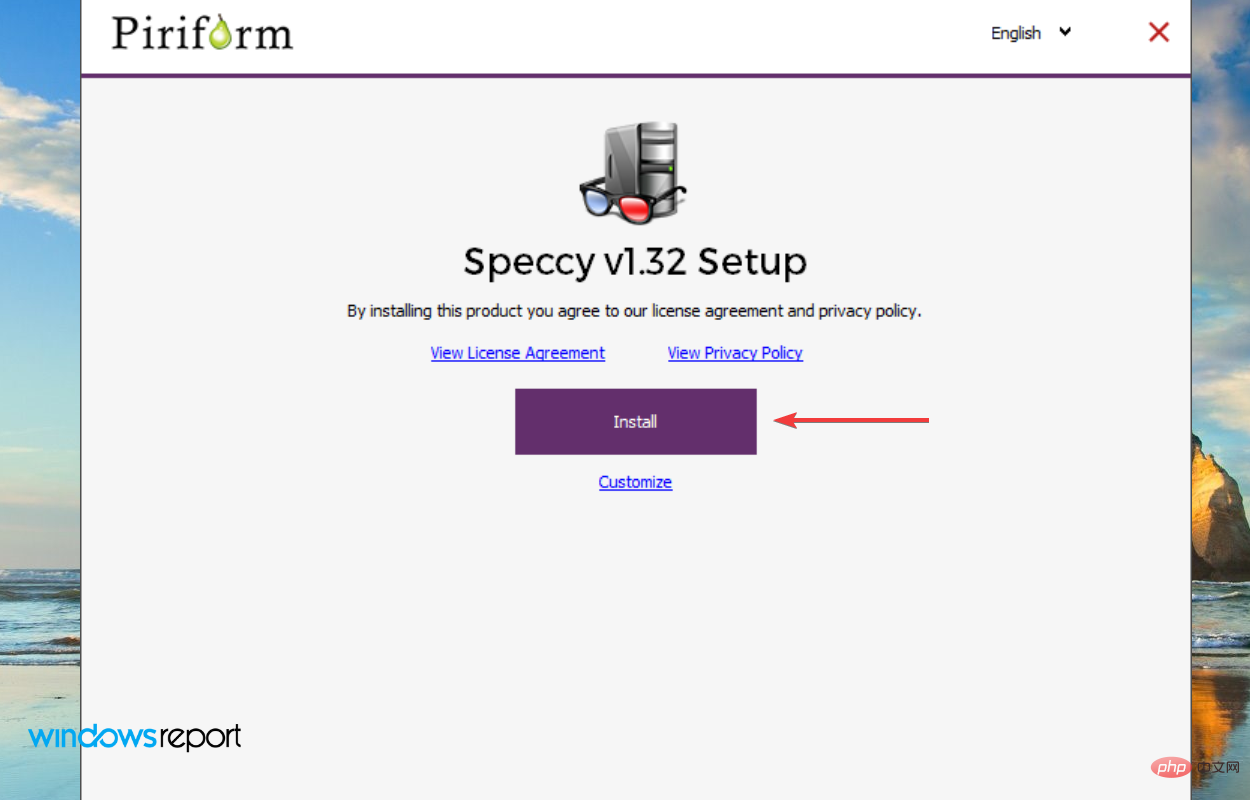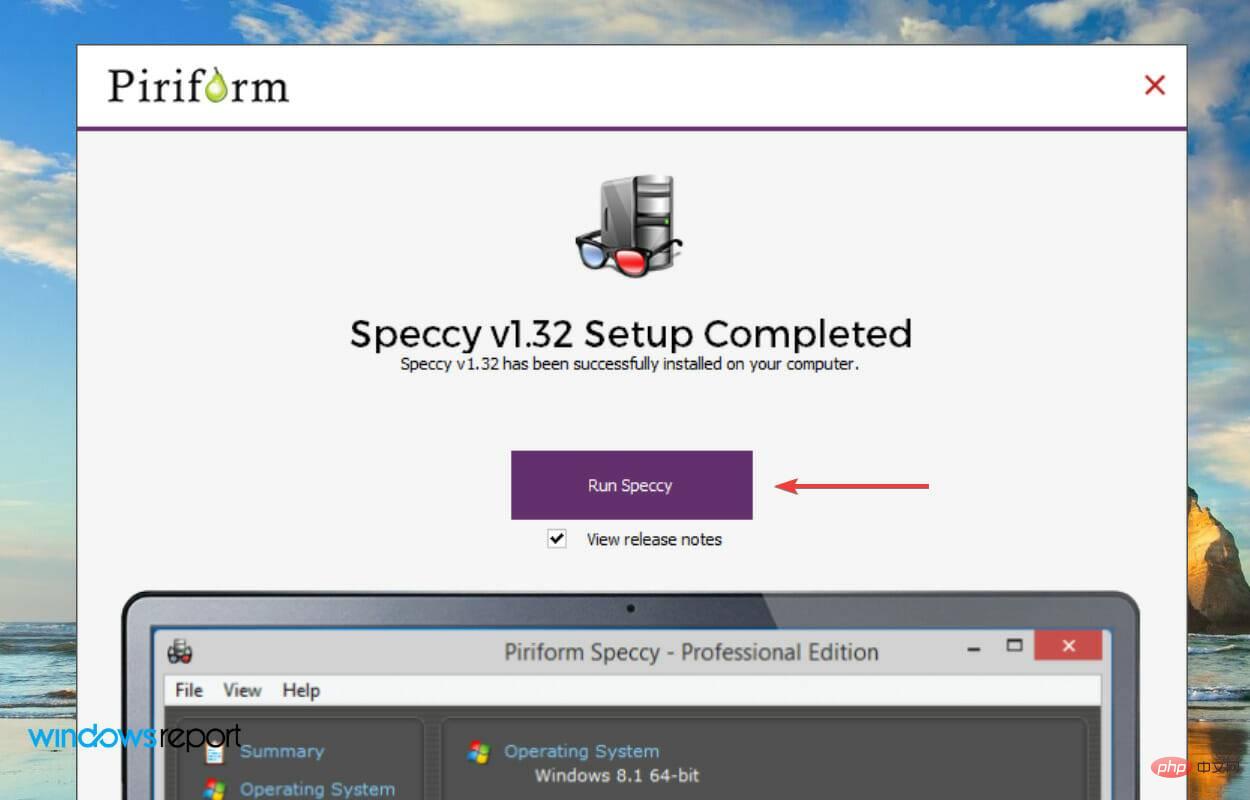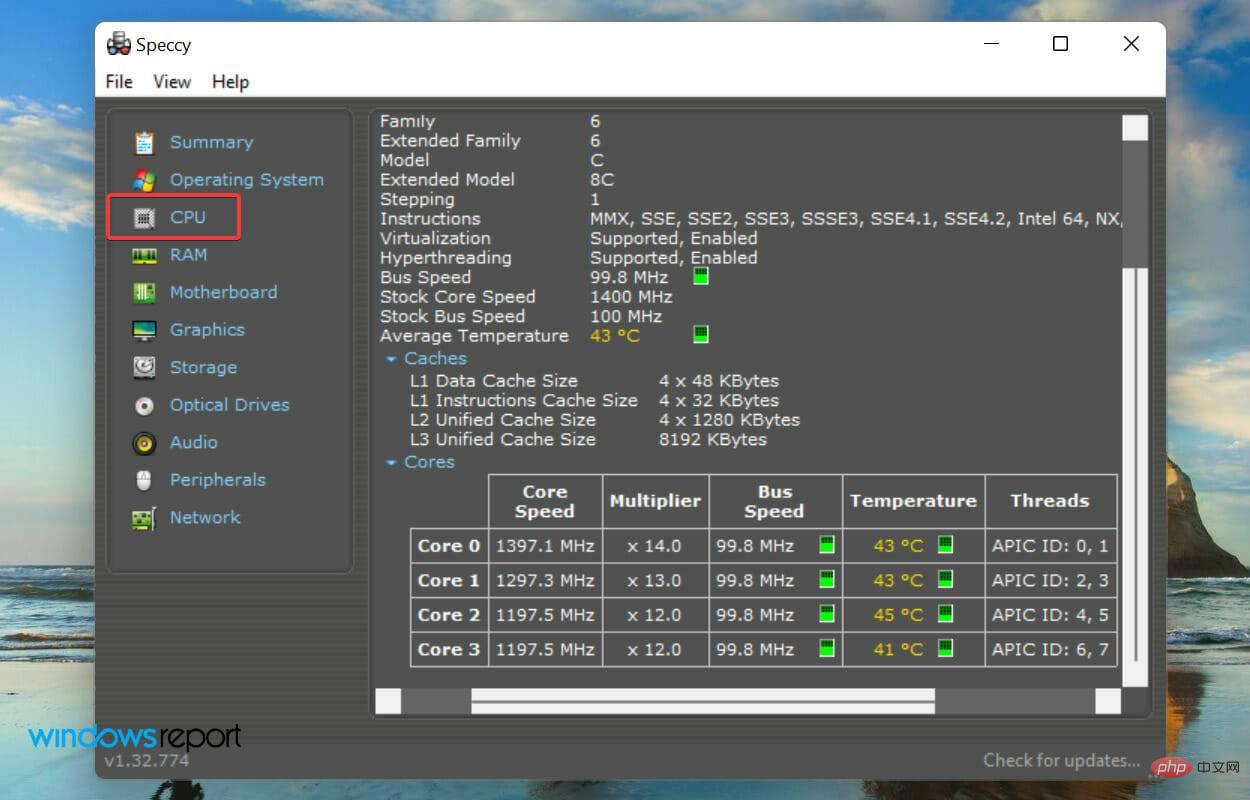How to check CPU temperature in Windows 11
What is normal CPU temperature and when should I be concerned?
There is no specific answer to this question. It depends on many factors, such as system configuration, whether it is overclocked, etc.
Ideally, normal CPU temperature should be in the range of 30°C to 55°C. If you are working on resource-intensive applications, CPU temperatures may approach 65°C. However, this shouldn't happen too often either.
Any temperature above 90°C can be dangerous to components and impair the performance of your PC. In this case, if the computer does not shut down automatically, shut down the computer and let the system cool down.
Also, clean any dust that may have settled in or around the CPU, and remove anything blocking airflow. Additionally, you can manually control your computer fan to lower the temperature to normal levels.
How to check CPU temperature in Windows 11?
1. Entering the BIOS
Your computer's BIOS interface may vary, but the steps listed here will provide you with a basic understanding of the process. Additionally, you can check the manufacturer's website for the exact steps.- Press Alt F4 and select Restart from the drop-down menu in the Close Windows box.

- Next, click OK to restart your computer.

- After the display lights up, press the F12 or Del key to enter the system BIOS. The manufacturer's name usually appears on this screen. To be on the safe side, click on the relevant key multiple times as the operating system boots very fast in new age systems.
- In BIOS, look for a tab named CPU or Performance Monitor, the CPU temperature should be listed there.

For those of you wondering how to check CPU temperature in Windows 11 without software, BIOS is the answer. On most computers you can check this way.
It is also suitable for those who avoid relying on third-party applications for functions that do not require them.
However, if it does not work or does not provide all the required information, there are also many third-party applications, two of which are listed in the following section.
2. Use an app to check CPU temperature
Core Temp is a reliable and effective third-party tool, but we cannot guarantee the same for the ads listed on its website. Therefore, we recommend that you keep a safe distance or do so at your own risk.- Go to Core Temp official website and click on the “Download” option.

- Double-click the downloaded file and select Yes in the UAC (User Account Control) prompt that appears.

- After the installation starts, click Next and follow the on-screen instructions to complete the installation process.

- After installation, launch the Core Temp application and you can now check the CPU temperature from the main panel.

As the name suggests, the Core Temp app is designed to check and display the CPU temperature in Windows 11. It is very effective and has a simple and innovative interface.
In addition to checking the temperature, you can also enable overheat protection to protect your system in case of a sudden rise in temperature.
3. Use the all-in-one performer solution
- Visit the Speccy official website and click the "Download" button under the "Free" column.

- Next, double-click the downloaded settings and click Yes on the UAC (User Account Control) prompt that pops up.

- Click Install in settings.

- After the installation process is complete, click Run Speccy.

- You can now check the CPU temperature listed in the app's home screen.

- Alternatively, you can navigate to the CPU tab from the left to get detailed information about performance and temperatures.

The Speccy app provides a summary of system performance along with temperatures. There are multiple tabs on the left, each tab listing relevant information.
Speccy is an all-around performer, and if you're looking for a tool that does more than just check your CPU temperature in Windows 11, you've found it.
What are the best CPU temperature monitoring software tools?
As was the case before, while some of them will only check the CPU temperature, others will do a lot more and give you a comprehensive summary of every aspect.
What to do if the CPU temperature is high?
If you work heavily on your system and have a lot of processes running in the background, it's not uncommon for CPU temperatures to spike to around 50°C to 60°C.
However, if you notice that the temperature consistently hovers within this range, it simply indicates a component or software problem.
In this case, you should check if the CPU fan is working properly and the airflow is smooth. Additionally, you can use thermal paste to control the temperature.
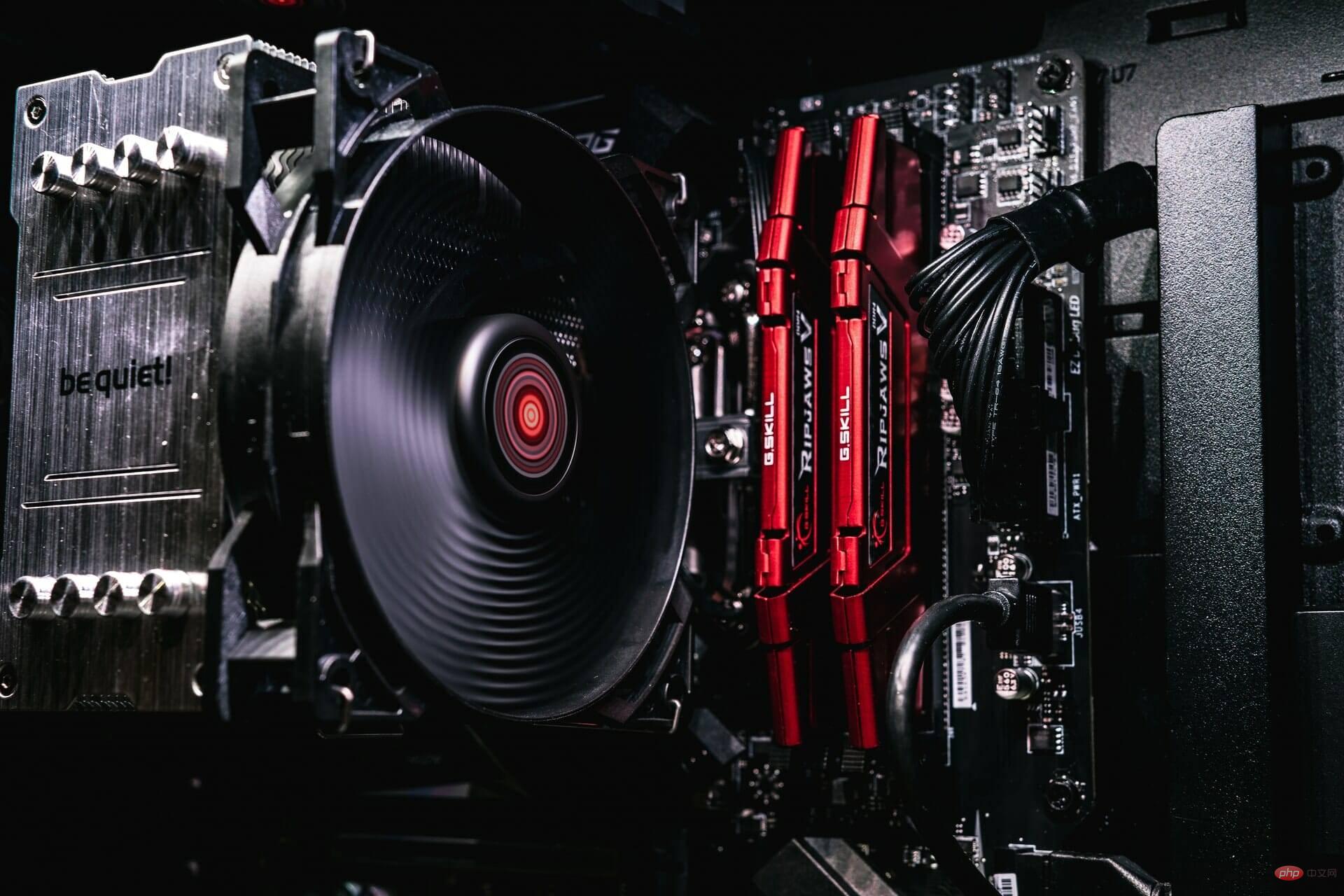
The above is the detailed content of How to check CPU temperature in Windows 11. For more information, please follow other related articles on the PHP Chinese website!

Hot AI Tools

Undresser.AI Undress
AI-powered app for creating realistic nude photos

AI Clothes Remover
Online AI tool for removing clothes from photos.

Undress AI Tool
Undress images for free

Clothoff.io
AI clothes remover

AI Hentai Generator
Generate AI Hentai for free.

Hot Article

Hot Tools

Notepad++7.3.1
Easy-to-use and free code editor

SublimeText3 Chinese version
Chinese version, very easy to use

Zend Studio 13.0.1
Powerful PHP integrated development environment

Dreamweaver CS6
Visual web development tools

SublimeText3 Mac version
God-level code editing software (SublimeText3)

Hot Topics
 1378
1378
 52
52
 How to convert XML to PDF on your phone?
Apr 02, 2025 pm 10:18 PM
How to convert XML to PDF on your phone?
Apr 02, 2025 pm 10:18 PM
It is not easy to convert XML to PDF directly on your phone, but it can be achieved with the help of cloud services. It is recommended to use a lightweight mobile app to upload XML files and receive generated PDFs, and convert them with cloud APIs. Cloud APIs use serverless computing services, and choosing the right platform is crucial. Complexity, error handling, security, and optimization strategies need to be considered when handling XML parsing and PDF generation. The entire process requires the front-end app and the back-end API to work together, and it requires some understanding of a variety of technologies.
 What is the reason why PS keeps showing loading?
Apr 06, 2025 pm 06:39 PM
What is the reason why PS keeps showing loading?
Apr 06, 2025 pm 06:39 PM
PS "Loading" problems are caused by resource access or processing problems: hard disk reading speed is slow or bad: Use CrystalDiskInfo to check the hard disk health and replace the problematic hard disk. Insufficient memory: Upgrade memory to meet PS's needs for high-resolution images and complex layer processing. Graphics card drivers are outdated or corrupted: Update the drivers to optimize communication between the PS and the graphics card. File paths are too long or file names have special characters: use short paths and avoid special characters. PS's own problem: Reinstall or repair the PS installer.
 How to jump from Word plug-in to browser for login authorization?
Apr 01, 2025 pm 08:27 PM
How to jump from Word plug-in to browser for login authorization?
Apr 01, 2025 pm 08:27 PM
How to achieve login authorization from within the application to outside the application? In some applications, we often encounter the need to jump from one application to another...
 xml online formatting
Apr 02, 2025 pm 10:06 PM
xml online formatting
Apr 02, 2025 pm 10:06 PM
XML Online Format Tools automatically organizes messy XML code into easy-to-read and maintain formats. By parsing the syntax tree of XML and applying formatting rules, these tools optimize the structure of the code, enhancing its maintainability and teamwork efficiency.
 Does H5 page production require continuous maintenance?
Apr 05, 2025 pm 11:27 PM
Does H5 page production require continuous maintenance?
Apr 05, 2025 pm 11:27 PM
The H5 page needs to be maintained continuously, because of factors such as code vulnerabilities, browser compatibility, performance optimization, security updates and user experience improvements. Effective maintenance methods include establishing a complete testing system, using version control tools, regularly monitoring page performance, collecting user feedback and formulating maintenance plans.
 How to convert XML to PDF on Android phone?
Apr 02, 2025 pm 09:51 PM
How to convert XML to PDF on Android phone?
Apr 02, 2025 pm 09:51 PM
Converting XML to PDF directly on Android phones cannot be achieved through the built-in features. You need to save the country through the following steps: convert XML data to formats recognized by the PDF generator (such as text or HTML); convert HTML to PDF using HTML generation libraries such as Flying Saucer.
 The XML file is too large, can I convert PDFs on my phone?
Apr 02, 2025 pm 09:54 PM
The XML file is too large, can I convert PDFs on my phone?
Apr 02, 2025 pm 09:54 PM
It is difficult to directly convert super large XML to PDF on mobile phones. It is recommended to adopt a partition strategy: cloud conversion: upload to the cloud platform and processed by the server. It is efficient and stable but requires network and possible payment; segmented processing: Use programming tools to split large XML into small files and convert them one by one, requiring programming capabilities; find conversion tools that specialize in processing large files, pay attention to checking user reviews to avoid choosing software that is prone to crash.
 How to speed up the loading speed of PS?
Apr 06, 2025 pm 06:27 PM
How to speed up the loading speed of PS?
Apr 06, 2025 pm 06:27 PM
Solving the problem of slow Photoshop startup requires a multi-pronged approach, including: upgrading hardware (memory, solid-state drive, CPU); uninstalling outdated or incompatible plug-ins; cleaning up system garbage and excessive background programs regularly; closing irrelevant programs with caution; avoiding opening a large number of files during startup.




